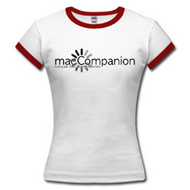
Mac Security 101
applemacpunk at cox.net
Smart Web Browsing: Use More Than Common Sense
by: Kale Feelhaver aka: Applemacpunk
We live in the Internet age. Nowadays, the Internet is more necessary than cable TV. We use the Internet to communicate, get our news, shop, do our banking, and entertain ourselves. The Internet is a huge source of information and convenience, but it is also a huge source of security risks. Thousands of identities are stolen off the Internet every day. As a smart Mac user, you should take a few steps to protect yourself on the World Wide Web.
First and foremost, when you connect to the Internet, use a personal firewall. Mac OS X includes firewall software, which can be turned on by simply launching System Preferences, clicking the Sharing pane, clicking the Firewall tab, and clicking the Start button. Surfing the web without a firewall is like living in a bad part of town, and never locking your doors. Naturally, you would lock your doors to keep unwanted people/threats out. Likewise, you should use a firewall on the Internet.

Hardware firewalls can be used to provide additional security. However, this is beyond the scope of this tutorial. I am planning a future article to discuss hardware firewalls in more detail. Just remember, turn on your firewall software when you are connected to the Internet. If you are a power user, and Mac OS X’s built-in firewall doesn’t have enough features for you, you might want to look at DoorStopX, Norton Personal Firewall, or NetBarrier.
After your firewall is turned on, you can configure your web browser to provide a little additional security. Many web sites use files called cookies to store personal settings. While cookies can provide some useful information, they can also be exploited to gain private information about a user or computer. Fortunately, Safari (and many other browsers) includes features to help you manage your cookies. Launch Safari and choose Preferences from the Safari menu. Click the Security icon and make sure that your browser is set to only accept cookies from sites you navigate to. This will prevent “advertiser cookies” which are unsolicited. While you are in there, you’ll probably want to check the box for pop-up blocking. That will also help limit cookies.

To see how many cookies are currently on your system, simply click the Show Cookies button. You can remove cookies one at a time, or simply remove them all at once. You will probably want to do this regularly as a preventative maintenance.

It is also a good idea to run anti-virus software on your Mac. Most viruses target Windows, but that doesn’t mean Mac OS X is immune to viruses. Many people think the Mac can’t get a virus. This is NOT true. Any operating system can get a virus. It is a good practice to run anti-virus software on any computer that is connected to the Internet, regardless of OS. There are many options out there including Norton Anti-Virusand VirusBarrier. If you have a limited budget, there is a freeware option called ClamXav.
Running a firewall, keeping track of your cookies, and running anti-virus software will help with Internet Security, but ultimately, it is the sites you visit that pose the biggest risks. All Mac users should use some common sense when they surf the web. For instance, if an offer looks too good to be true… it probably is. Be careful about which links you click. Luckily, the Mac provides a certain level of security by simply being a Mac (most exploits are targeted at Windows), but everyone still needs to use some common sense.
Viruses and worms are normally targeted at Windows, but many identity theft attempts are platform agnostic. Always verify the URL in the address bar of your browser. For instance, there are many emails that claim to be from a bank and will include a clickable link. When you click the link, it actually takes you to a different website (which looks like the bank’s website) in hopes that you will enter your login information. The example below shows a fake eBay page (which was linked from an email) next to a real eBay page. The two look very similar, but only one is legitimate.

There are 2 important things to notice in this example. First, the URLs do not match. The legitimate page uses a URL related to eBay (signin.ebay.com), the fake page uses an IP address (16.22.44.10) followed by a string of directories. This is a good indicator that something is not right. Second, the legitimate page is an HTTPS page, and the fake page is an HTTP page. Most login pages will use HTTPS, opposed to HTTP. The S in HTTPS stands for secure. In addition, when visiting an HTTPS page, Safari displays a lock icon in the top right corner. This indicates that the site uses an SSL certificate. To view the certificate, simply click the lock icon. Look at the name of the website on the certificate. If it does not match the URL you are visiting, it is probably a scam. You can also use this method to see the expiration date of the certificate. If the certificate is expired, something is fishy. A valid certificate will display a green checkbox icon; an expired one will display a red x.

Using these simple steps and a little common sense, Mac users can avoid some of the dark corners of the Internet and protect themselves. Firewall software is a great way to help protect yourself, anti-virus software is even more helpful, and proper browser configuration can further protect you. However, nothing takes the place of common sense. Everybody gets that funny feeling when something doesn’t seem right… listen to that feeling! Getting your identity stolen is serious business. Do your best to keep from becoming a statistic. Remember, Mac users ARE smarter.

